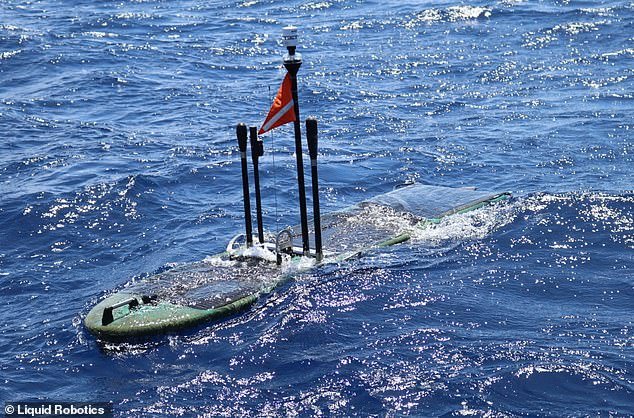
An unmanned ocean craft has been spotted off the coast of Queensland, deployed on behalf of the United States military.
Powered by wave motion and solar energy, the Wave Glider is an autonomous vessel designed to collect real-time intelligence for both defence and environmental applications.
It was recently seen off the coast of Mackay, on the Coral Sea in north Queensland, during a week-long deployment that ends on Thursday, July 24.
Developed by US marine robotics firm Liquid Robotics, the mission was arranged on behalf of the US Special Operations Command.
The exact purpose of the deployment remains unclear. The craft can be configured for a wide range of defence and civilian uses, depending on its customised payload.
Its capabilities include tracking and communicating with submarines, gathering acoustic, signal, and image intelligence, and conducting surface and sub-surface surveillance and communications.
On the surface, the Wave Glider is not much larger than a surfboard, with a mast extending about a metre above the water. This is connected via an ‘umbilical’ tether to a submerged unit located roughly eight metres below.
Originally designed to record the sounds of humpback whales, the Wave Glider has since evolved into a versatile defence tool through a partnership with Boeing.

On the surface, the craft appears about the size of a surfboard, with a one-metre tall mast

A sub deployment coasts about eight metres below the surface propelled using wave motion
In 2016, a network of Wave Gliders was used to detect, report, and track a live submarine during the UK Navy’s Unmanned Warrior demonstration.
The crafts were fitted with acoustic sensors made by Boeing to locate an underwater vehicle and a diesel submarine off the coast of Northern Scotland.
Later that year, Boeing acquired Liquid Robotics, which now operates as a wholly owned subsidiary under Boeing’s Defence, Space and Security division.
First developed in 2007, the technology can collect data on wind, weather, and waves, and can reportedly operate unmanned for up to a year.
It is also used for environmental assessment and offshore energy applications.
In 2017, the Wave Glider was deployed by the Australian Institute of Marine Science (AIMS) to monitor conditions in the Great Barrier Reef.
The 200-nautical-mile trial mission provided continuous, real-time environmental ocean data, including temperature, turbidity, currents, wave height, and salinity.
Dr Lyndon Llewellyn, Head of Data and Technology Innovation at AIMS, said the craft’s ability to remain true to its charted course was ‘extraordinary’.

The gliders are reportedly capable of travelling unmanned at sea for a year
‘It went where it was told to and it stayed the course like an orienteering champion,’ he said in a statement at the time.
‘We are impressed with the number of different measurements it could conduct at the same time and its ability to transmit the data back to our base immediately and reliably while navigating and performing its mission.’
A spokesperson confirmed AIMS had not used the Wave Glider since the 2017 trial.
Liquid Robotics has been contacted by Daily Mail Australia.











